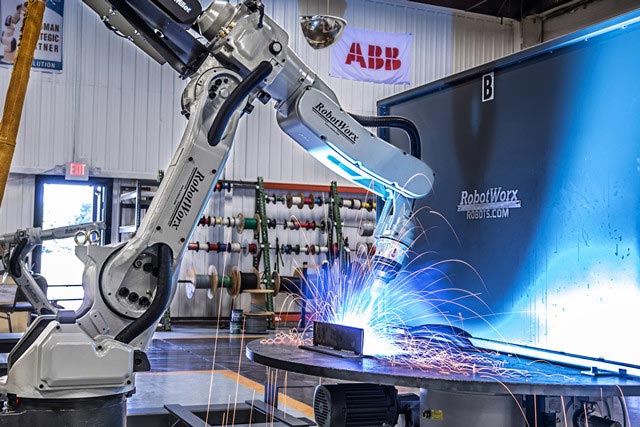Industrial robots are built for a lot of industrial applications that have grown rather complex with the changing times. Food manufacturing, for instance, has developed into complicated processes which range from preparation to palletizing. The end product has to meet specific standards of cleanliness and safety.
Food Manufacturing Robots These bots are mostly used in:
- Dispensing
- Feed placement
- Packaging/casing of the end product
- Pick-and-placing the finished product into containers
- Sorting
All these processes take precious time when performed by humans who cannot be as precise as the machines would be. More recent developments inindustrial robots support order picking. An employee or consumer paces an order electronically and the food robot fills the specific order automatically.
Packaging of food items is a complex process. A customer will be displeased if they pick an item which weighs less than the labeling claims. A robot will not make the error of packing less or more because it is programmed for precision. Packaging involves speed, consistency and high levels of repetition.
Humans will have limitations especially with the repetition and consistency bits. Food robots have intelligent vision systems for the purpose of accurately placing specific products on a belt without error. The vision systems are also useful in sorting by shape, size or color.
Applications of Robots in Food Manufacturing
Robotic food manufacturing has done a lot to improve food processing in terms of hygiene and quality. Food automation is bound to rise in the next few years as more industry players invest in food robots.
Robotic applications in the food manufacturing are separated into two stages:
- Primary food processing
- Secondary food processing
Primary Food Processing
This involves tasks such as handling raw products: sorting, cleaning, chopping, packaging and other related tasks are included in the handling stage. Some foods such as raw vegetables must undergo primary processing before they can be packaged for sale to consumers. Other foods pass through the secondary processing stage.
Other tasks included in primary food processing are:
- Robotic butchery: butchery is not a very easy task to automate as every carcass is different. Some tasks are easier to automate than others. Beef butchery, for instance, has not been easy to automate. Rib cutting involves operating a circular saw at high speed for several hours. This can be very dangerous for human workers.
- Fruit and vegetable pick-and-place: fruits and vegetables come in various shapes and sizes which makes them challenging for robots to handle. They are also rather delicate and can be damaged if not handled delicately. Advances in gripping technologies have included flexible grippers that are able to handle delicate foods.
- Robotic cutting and slicing: some of the cutting and slicing can easily be performed by kitchen food processors for instance, slicing vegetables into uniform shapes. However, more complex slicing and cutting such as fish cutting has incorporated the use of food robots. It involves detecting and removing defects and cutting fillets into uniform shapes and sizes.
Secondary Food Processing
Once products have undergone primary food processing, they are ready for this stage.
It involves the following tasks:
- Product pick-and-place: simply put, the products are picked from one place and placed into another. The difference from the primary processing pick-and-place is that the products are more uniform in shape and size. Uniform foods are easy for the robot to handle.
- Cake decoration: a robotic arm that that looks like a 3D printer is used to pipe icing onto the cake. Additionally, hand-drawn decorations can be piped onto cakes on a moving conveyor. Cakes can be cut into intricate shapes using high pressure water.
Robots have been created to simulate the human touch thus making the production process labor-free while the final product looks like it was created by humans. Food robots that are involved in clean up processes are thoroughly cleaned to avoid contaminating food. Manufactures of these robots have found ways to ensure that the robot casings are smoother with no loose wires. This makes for thorough wash downs at the end of every cycle.

